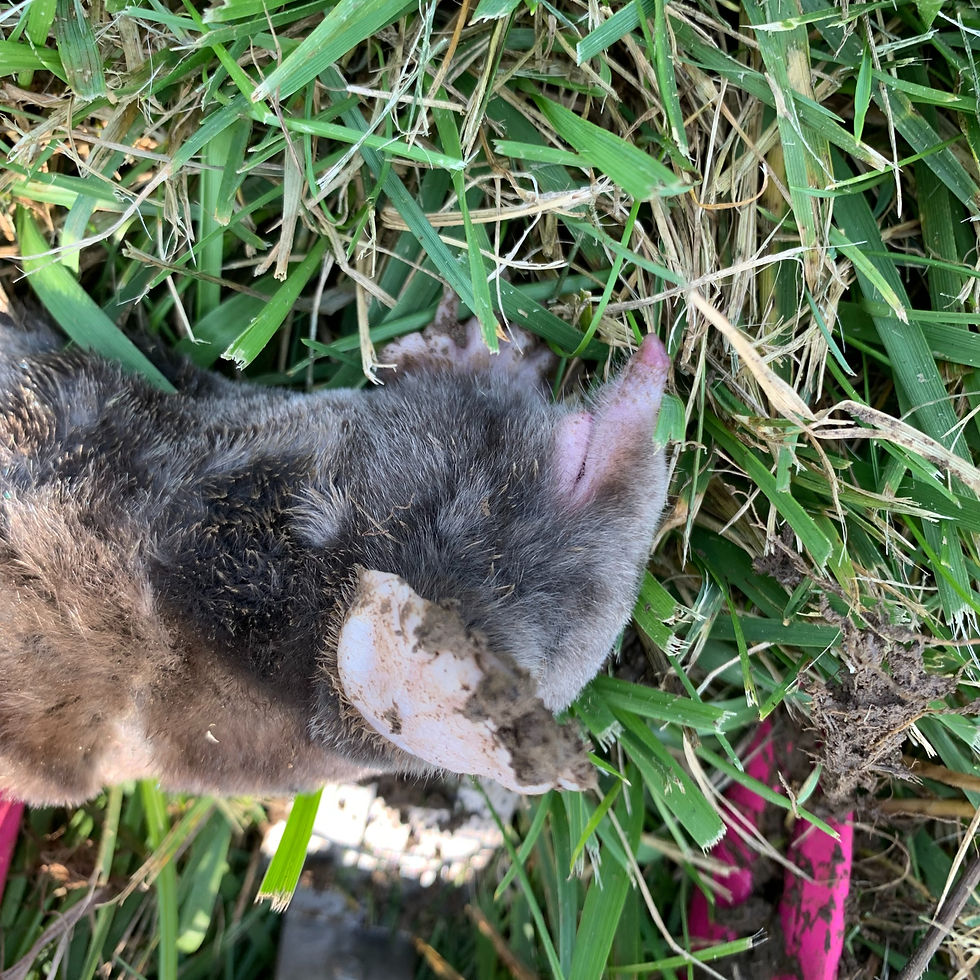
Yard Moles are commonly found throughout residential areas. They're well-adapted to living underground, with powerful front legs and long, sharp claws that are perfect for digging tunnels. Moles have a unique adaptation in their hemoglobin that allows them to store oxygen in their blood and survive in low-oxygen environments underground. Yard Moles are attracted to areas with lots of insects and moist soils of a variety of habitats, including forests, grasslands, and suburban yards.
1.) Food: Moles primarily eat grubs, earthworms, and other soil-dwelling insects. If a yard has a lot of these types of insects, yard moles may be drawn to it.
2.) Soil quality: Yard Moles are also attracted to soil with abundant moisture, as it helps to make digging easier and provide a good habitat for their prey. Yard moles also aerate soil, improving the surrounding areas soil quality. If a yard has compacted or dry soil, moles may not be as attracted to it.
3.) Habitat: Yard Moles prefer to live in areas with plenty of cover, such as thick grass, trees, shrubs, and gardens. Moles in yard control populations of certain insects, helping improve local ecosystems.

Mole Activity: Moles are typically 6-8 inches long and weigh only a few ounces. Moles in yard will be most active in the spring and fall when the soil is moist and temperatures are mild. If an area provides the three conditions above then yard moles may be more likely to be active in that area. Moles do not hibernate, they're active year-round. They're solitary creatures and are most active during the early morning and late afternoon. Creating a complex network of tunnels and chambers underground. Moles in yard dig up to 18 feet of tunnel per hour and can dig up to 100 feet of tunnel per day.
Moles In Yard: While Moles in your yard can help aerate soil and control insect populations, their burrowing activities can also damage lawns and gardens, making them a nuisance to many homeowners. Yard Moles are not rodents, despite being often mistaken for them. Moles actually are part of the Talpidae family. There are various ways to control and remove moles in yard. Including methods like, trapping, repelling, and modifying the habitat to make it less attractive to moles. learning to trap nuisance yard moles is the most effective method of removal Other methods are not as effective and most of the time do not work.

Yard Mole Removal: If you're concerned about moles in your yard, Trapping nuisance yard moles with scissor traps is the best way to quickly remove the moles in yard.
1.) Setting - Scissor traps set inside of the mole tunnels, covering trap with soil and grass.
2.) checking - Check trap every day and walk around yard inspecting for fresh mole activity.
3.) Removing Yard Moles - when you catch a mole, set the same scissor trap in the exact same spot. Yard Moles have an amazing sense of smell and will commonly follow the same path in search of food. If you haven't trapped a mole after a few days, go ahead and move traps to fresh mole activity. Repeat this trapping process until there's no new mole activity in your yard. Contact Bear's Wildlife Services for professional trapping service, tutorials, & free information on moles in yard removal.

Comments